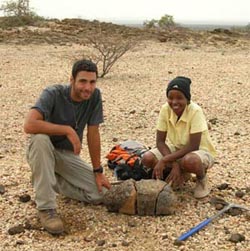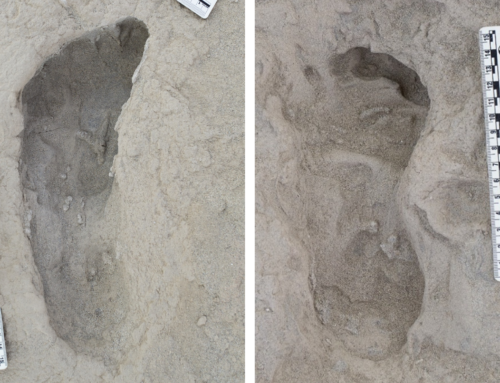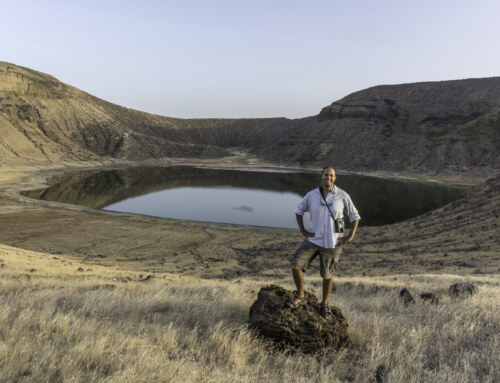During the summer of 2008, Turkana Basin Institute scientists Erik Seiffert and Joe Sertich joined scientists from the National Museums of Kenya for a return trip to the Turkana Basin to search for more complete fossils from known sites, and to explore for new fossil localities in a series of sediments exposed west of Lake Turkana that are believed to be of Late Cretaceous or early Paleogene age.
There is currently a 40 million-year-long gap in Africa’s vertebrate fossil record, between about 96 and 56 million years ago – an interval during which Africa became isolated from other continents, non-avian dinosaurs went extinct, and placental mammals first arose. At present there are no records of mammals, and only a few fragmentary remains of dinosaurs, from this massive lacuna in Africa’s fossil record, and as a result scientists know nothing about what happened to these groups during this pivotal interval in African prehistory. 
Fossils from these sites will be critical for testing a number of outstanding hypotheses related to: 1) the pattern and timing of fragmentation of the southern supercontinent (Gondwana); 2) the nature of non-avian dinosaur evolution in Africa prior to the K-T mass extinction; and 3) the nature of mammalian evolution in the Late Cretaceous of Africa.





